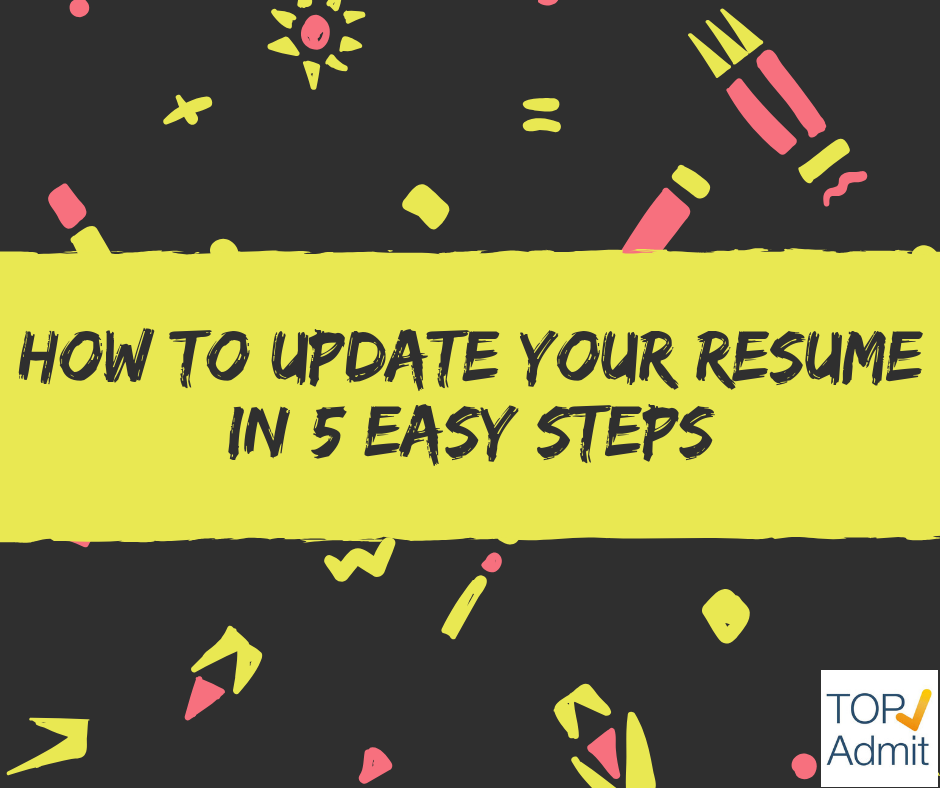If you’ve lost patience with your current boss or you’ve lost interest in your current job (for any reason), you may be thinking about stepping back onto the job market. In this case, leaving your current employer will be your own decision, and you’ll be able to make the transition on your own timeline. But not every exit from the workplace happens in such an organized and predictable way. More often, the transition from employment to job search comes as a surprise, and the faster you can find and revise your existing resume file, the faster you can get your job search underway and get back on your feet.
How often do you need to update your resume?
Always update your resume when you start a new job (to keep it current). Even if you’ve been in the same job for several years, updating your resume annually is a good idea. Your responsibilities may have changed, or you may have taken a class or gotten a certification. Your resume should reflect these changes.
How do you edit your resume?
Instead of rewriting your resume from the ground up, follow these five simple steps and update the file you already have (full details below).
- Change your visual style
- Revise your summary
- Add to your education section
- Update your work history
- Update your skills
- Change your visual style
Give your resume a style makeover. You can reuse some of the text you’ve already written, but now is a great time to develop a new layout and a new template. Explore the style and presentation options on LiveCareer and choose a font, color palette, and visual theme that fits with your personal brand. Remember that simple style elements are usually more effective than complicated ones, and your colors and font styles should be limited to two or three. Watch out for fancy elements that might confuse resume scanners, and don’t include images or photos.
2. Revise your summary
No matter what you were looking for during your last job search, you’re probably not in an identical state of mind this time around. People change and grow as time goes by, and career ambitions shift and evolve. Make sure your recent growth is reflected in your new resume summary. If you were looking for a mid-level position the last time you struck off in search of work, now may be the time to start reaching for senior roles and pitching your readiness to lead and manage others. As always, state your ambitions and expectations briefly and clearly, and focus on what you have to offer, not just what you want.
People change and grow as time goes by, and career ambitions shift and evolve. Make sure your recent growth is reflected in your new resume summary.
3. Add to your education section
You previous degrees and training qualifications will stay the same, but you’ll want to add any new courses you’ve taken or certifications you’ve earned since your last stint on the market. If you have lots to add, go back to your earlier qualifications and remove the following:
1.) Your high school diploma
2.) your college and high school GPAs
3) Training courses and certifications that don’t apply to your current job or industry.
4. Update your work history
Since you now have more experience than you did when you drafted this earlier version, you’ll need to tighten the summary of your entire career timeline. Add your most position title, your employer’s name, and a bulleted list of your most important accomplishments in this role. Then move down your list of past positions and remove at least one former job that holds minimal relevance to your current goals.
5. Update your skills
Have you increased your proficiency levels with specific software applications? Have you moved from basic competency to “expert levels”? Have you added new skills to your repertoire that you couldn’t claim in the past? Make sure each of these are represented before you re-launch your search.
Source: https://www.livecareer.com/career/advice/resume/update-your-resume-in-five-steps





